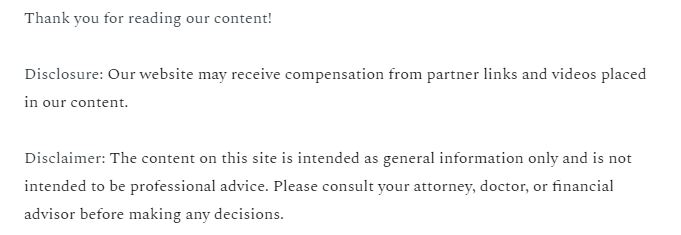
Owning a home comes with an incredible sense of pride and freedom—but it also comes with an endless list of responsibilities. From the roof above to the foundation below, there’s always something that needs to be checked, cleaned, maintained, or repaired. That’s why having a house management checklist is so essential. It’s your roadmap for keeping every part of your home running smoothly and protecting it from costly damage.
The truth is, maintenance isn’t about reacting when something breaks—it’s about preventing those problems in the first place. A solid plan keeps your house safe, efficient, and beautiful, while also saving you from the stress of surprise repairs. So, whether you’re a first-time homeowner or a seasoned pro, this ultimate guide will walk you through what to do and when, so you can enjoy your home with confidence.
Seasonal Roof and Gutter Maintenance
Your roof does a lot more than just keep you dry—it protects everything inside your home from the elements. Over time, though, even the best roofs wear down from sun exposure, wind, and rain. Making roof and gutter checks part of your house management checklist helps you spot problems before they become serious.
Start by giving your roof a visual inspection twice a year, ideally in spring and fall. Look for missing or cracked shingles, rusted flashing, or areas where water might pool. These are small warning signs that, if ignored, can lead to leaks or mold growth.
When it comes to gutters, it’s not just about removing leaves. The type of system you have matters, too. Upgrading to a seamless gutter system can make a huge difference—these gutters have fewer joints, meaning fewer places for debris to collect or leaks to form. That means less maintenance and better protection for your fascia and siding.
Pro tip: after big storms, check downspouts to make sure water is flowing freely away from your foundation. Standing water near the house can weaken your foundation over time.
Keeping Your Home Comfortable Year-Round
There’s nothing worse than an air conditioner that dies on the hottest day of the year or a furnace that refuses to work on a freezing morning. Climate control and indoor air quality are key parts of any smart house management checklist, so it’s worth giving your heating and cooling system the attention it deserves.
Start by changing your filters every 90 days—or monthly if you have pets or allergies. Clean air filters mean your system doesn’t have to work as hard, which saves you money on energy bills.
For deeper maintenance, partner with a trusted HVAC company at least once a year. They can inspect your system’s coils, blower motor, and refrigerant levels, making sure everything is running efficiently. A good technician can also catch problems early, like tiny leaks or clogged condensate drains that can cause major issues later.
Don’t forget about your vents and ducts, too. Vacuuming out dust and ensuring registers aren’t blocked by furniture helps air circulate better. Consider adding a smart thermostat—it can automatically adjust settings for comfort and savings.
Plumbing and Wastewater Management
Few things can ruin your day faster than a plumbing issue. That’s why the plumbing system deserves a solid spot on your house management checklist. Regular inspections help you avoid leaks, odors, and expensive water damage.
Start by checking all visible pipes—under sinks, behind toilets, and in basements—for moisture or corrosion. Look for slow-draining sinks or gurgling noises that might indicate partial clogs. Even a small drip can waste gallons of water and raise your bills.
If your home uses a septic system, this next point is critical. Scheduling a septic pump out every three to five years keeps the system running properly. Skipping it can lead to backups or nasty smells in your yard. A professional will also inspect the tank and drain field for any signs of damage.
To keep things running smoothly between professional visits, use enzyme-based drain treatments monthly. They help break down organic waste naturally, reducing the risk of clogs.
Roof Integrity and Structural Protection
While gutters and shingles are one part of the story, roof integrity goes deeper. It’s about protecting your home’s structure from water intrusion and ensuring proper insulation. That’s why roofing should always make an appearance on your house management checklist.
Take a peek inside your attic once in a while. If you notice damp insulation, dark spots on the wood, or a musty smell, moisture could be getting in. Early detection can prevent rot and mold, saving thousands in repairs.
If you’re not comfortable climbing up yourself, schedule a professional inspection every two years. A reputable roofing specialist will check flashing, vent boots, and sealants. They can also look for sagging or soft spots that may signal deeper structural concerns.
After any major storm, even if everything looks fine from the ground, it’s smart to have the roof evaluated. Sometimes damage isn’t visible until it’s too late. Keep a folder of inspection photos and reports—it’s a great record for insurance and resale purposes.
Driveways, Walkways, and Outdoor Surfaces
Your driveway and walkways are more than just functional—they set the tone for your home’s curb appeal. They also take a beating from foot traffic, vehicles, and weather changes. Regular upkeep keeps them looking great and safe to use.
Include surface care in your house management checklist by setting a reminder to sweep, pressure wash, and inspect twice a year. Look for cracks or uneven spots where water can collect.
If you have a paved driveway, proper maintenance is key. Resealing asphalt every three to five years helps prevent potholes and water damage. It also gives your driveway a fresh, clean look. Small cracks can be filled easily with a sealant kit from the hardware store—don’t wait for them to spread.
And don’t forget about edges! Weeds love to grow along borders, which can cause crumbling over time. A little trimming and weeding can keep your surfaces looking sharp and tidy.
Fireplace and Indoor Safety Checks
Few things feel cozier than a warm fire on a cold evening—but your fireplace also demands regular attention. Fire safety should be a non-negotiable part of any house management checklist, even if you only use your fireplace occasionally.
Inspect your firebox for cracks or missing mortar, and make sure your damper opens and closes easily. It’s also important to keep an eye on carbon monoxide and smoke detectors—test them monthly and replace batteries at least once a year.
To keep your chimney clean and safe, hire a professional chimney sweeping service once a year. Over time, soot and creosote can build up, which increases the risk of chimney fires. A professional sweep will also check for animal nests, blockages, and structural issues that might go unnoticed.
When storing firewood, keep it stacked at least 30 feet away from your home to prevent termites and other pests from finding a shortcut inside.
Pest Prevention and Sanitation Routines
Let’s be honest—no one wants to think about pests. But ignoring them can lead to much bigger headaches down the road. A clean, well-sealed home is your best defense, and adding pest control habits to your house management checklist makes all the difference.
Start with the basics: keep food sealed, take out trash regularly, and fix leaky pipes that attract moisture-loving insects. Seal up entry points around doors, windows, and vents with caulk or weather stripping.
Even with the best habits, certain pests—like cockroaches—can find a way in. That’s when professional cockroach treatments come in handy. Scheduling preventative treatments in warmer months can help stop infestations before they start.
It’s also smart to inspect your pantry and storage areas every few months. Look for droppings, holes in packaging, or other signs of activity. Early detection saves time, money, and stress.
Plumbing, Drains, and Moisture Control
Drains are one of those things we take for granted—until they stop working. Including them in your house management checklist keeps everything flowing the way it should.
Every few months, run hot water down each drain to clear the buildup. Use strainers in kitchen sinks and showers to catch hair, food, and debris before they cause clogs. Avoid pouring grease down the drain—it solidifies and narrows the pipes over time.
Even with regular cleaning, though, buildup happens. Hiring a professional drain cleaning service once a year is a great preventive step. They use specialized equipment to remove gunk and check for hidden blockages that store-bought products can’t reach.
In basements or crawl spaces, check for standing water or damp spots. Installing a dehumidifier or sump pump can protect against mold and structural damage. Moisture control is one of the simplest yet most powerful ways to maintain your home’s long-term health.
Protecting the Exterior and Keeping It Beautiful
The exterior of your home takes a beating from the sun, rain, and wind. A few annual touch-ups go a long way in keeping it looking sharp and structurally sound.
Walk around your home twice a year to inspect siding, window frames, and trim. Look for peeling paint, cracks, or mildew spots. Pressure wash gently to remove dirt, but avoid using too much force on delicate materials.
For metal surfaces—like railings, doors, or fences—consider exterior electrostatic painting. This method uses a magnetic charge to evenly coat surfaces, creating a smooth, durable finish that resists corrosion and fading. It’s especially great for homes in humid or coastal climates where rust can be a problem.
Make sure to check caulking around windows and doors, too. Replacing cracked or missing caulk prevents drafts and keeps moisture out.
Outdoor Living Spaces and Deck Maintenance
Outdoor spaces are where memories are made—BBQs, family dinners, or just relaxing after a long day. But decks and patios face year-round exposure to the elements, so maintenance is non-negotiable.
Add deck inspection and care to your house management checklist at least once a year. Check for loose boards, rusted fasteners, and signs of rot. If water soaks in rather than beads on the surface, it’s time to reseal.
Working with a professional deck company is a smart move if your deck is older or has visible wear. They can evaluate structural integrity, replace damaged sections, and apply protective coatings that extend their lifespan.
For day-to-day care, sweep regularly to remove leaves and debris that trap moisture. Trim nearby shrubs or trees to improve airflow and sunlight exposure. Your deck will last longer—and look better—if it can dry out completely after rain.
Staying Organized and Ahead of the Game
It’s easy to feel overwhelmed by all the tasks that come with homeownership. But the secret to success is organization. A printed or digital house management checklist helps you track what’s been done and what needs attention next.
You can break tasks into monthly, quarterly, and annual categories. For example:
-
Monthly: clean filters, check drains, and test smoke detectors.
-
Quarterly: inspect roofs, gutters, and exterior paint.
-
Annually: schedule professional services like HVAC tune-ups and pest control.
Some homeowners like using apps to remind them when it’s time for maintenance. Others prefer a physical binder with receipts and inspection notes. Whatever your system, consistency matters more than format.
The more regularly you use your house management checklist, the fewer surprises you’ll have to deal with—and the easier it’ll be to keep your home in top shape.
Homeownership is about more than just having a place to live—it’s about caring for one of your most valuable investments. With a reliable house management checklist, you’re not just reacting to issues; you’re staying ahead of them. From the roof to the drains, each part of your home deserves attention, and a proactive approach makes all the difference.
Regular maintenance might not be glamorous, but it’s the secret to a worry-free, comfortable, and beautiful home. Start small, stay consistent, and check off those items one by one. In time, your house management checklist will become second nature—a trusted routine that gives you peace of mind and keeps your home in excellent condition for years to come.



